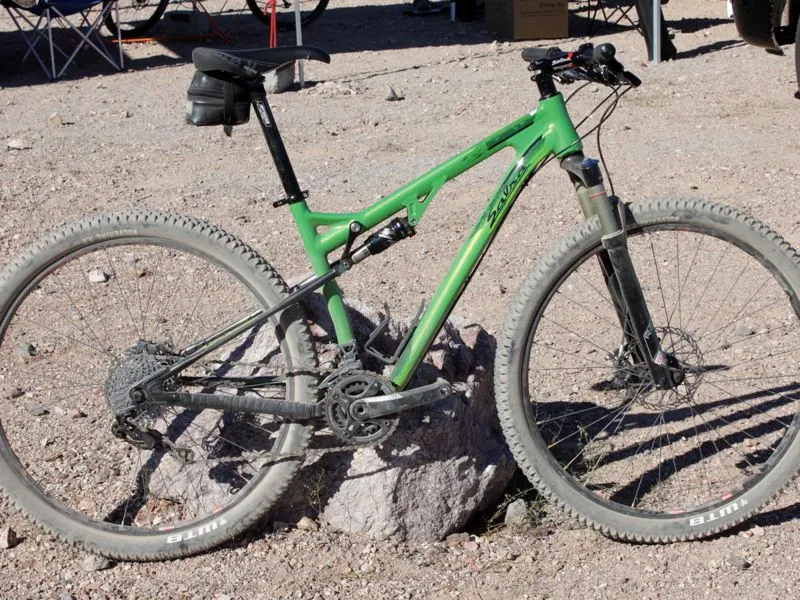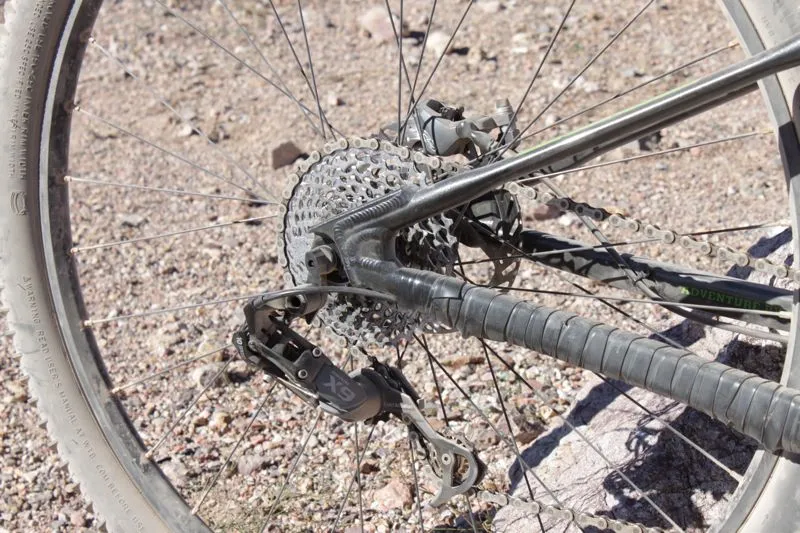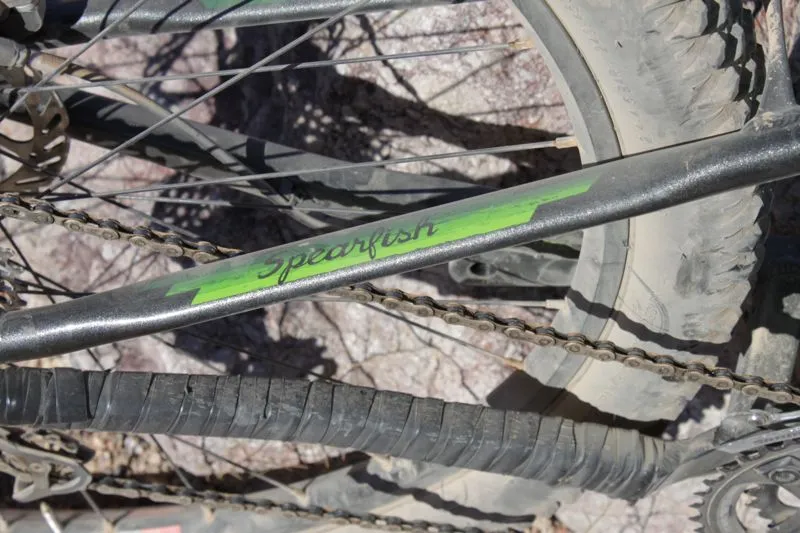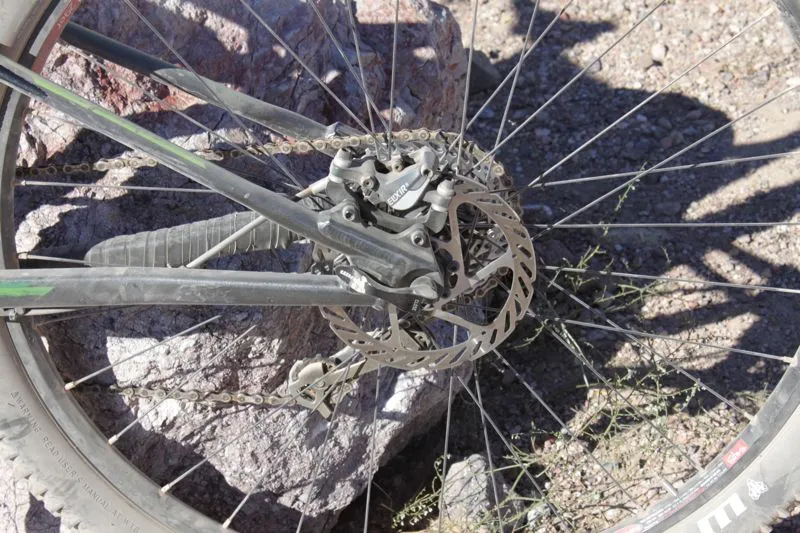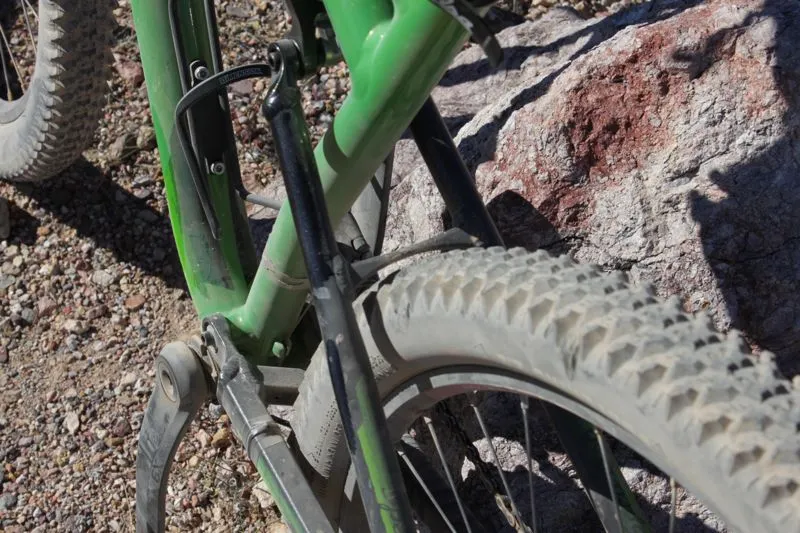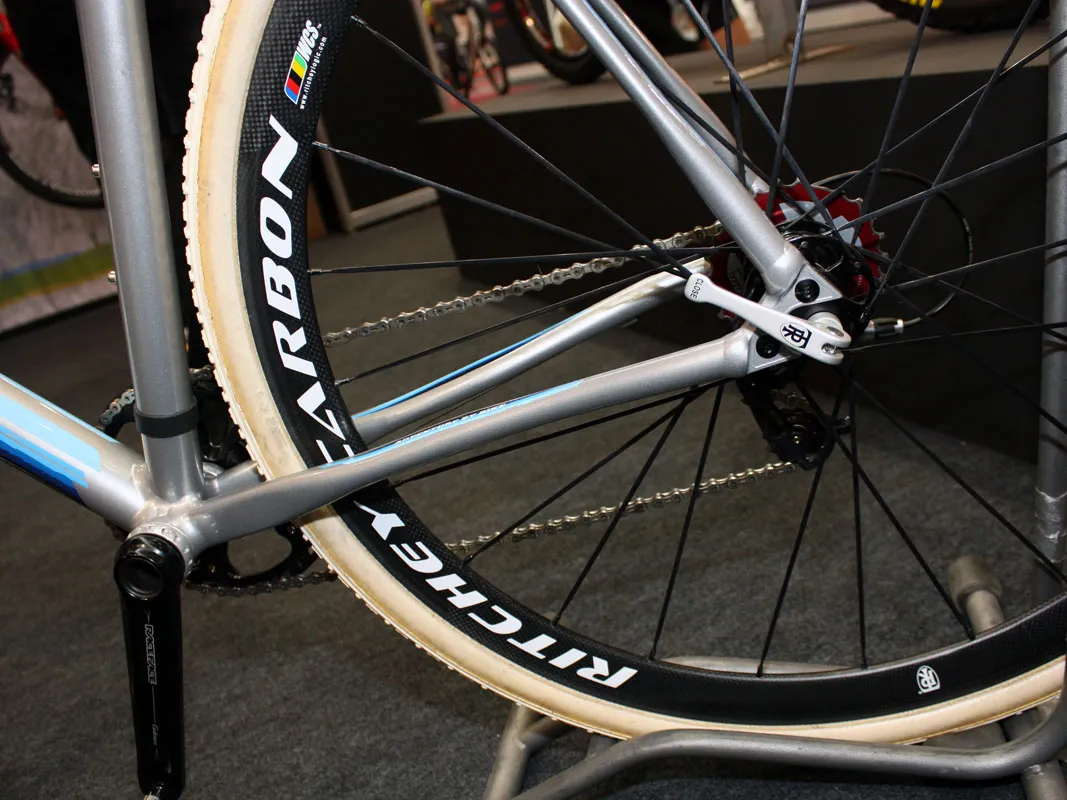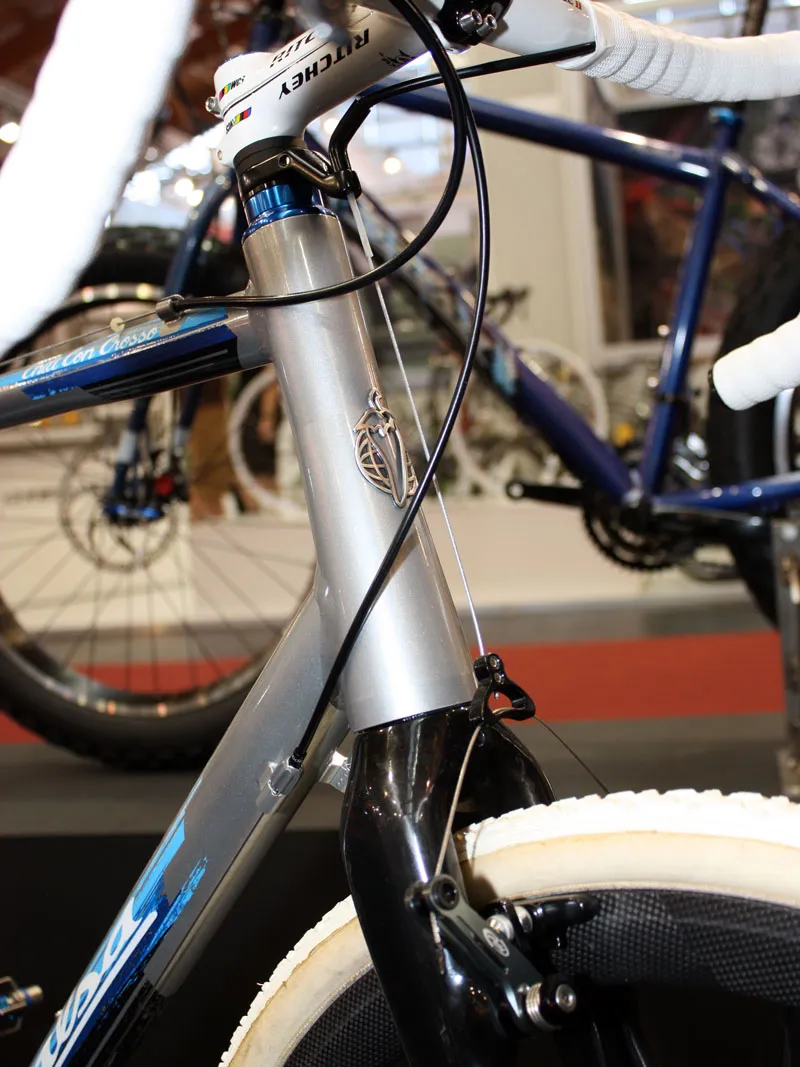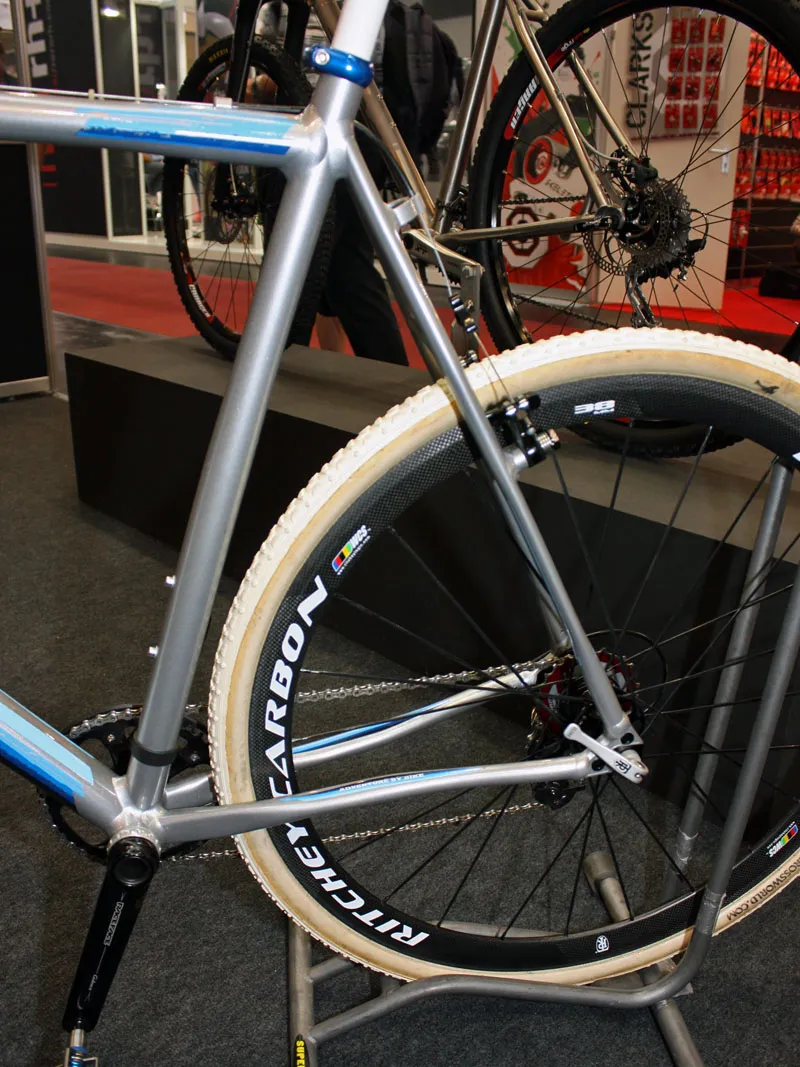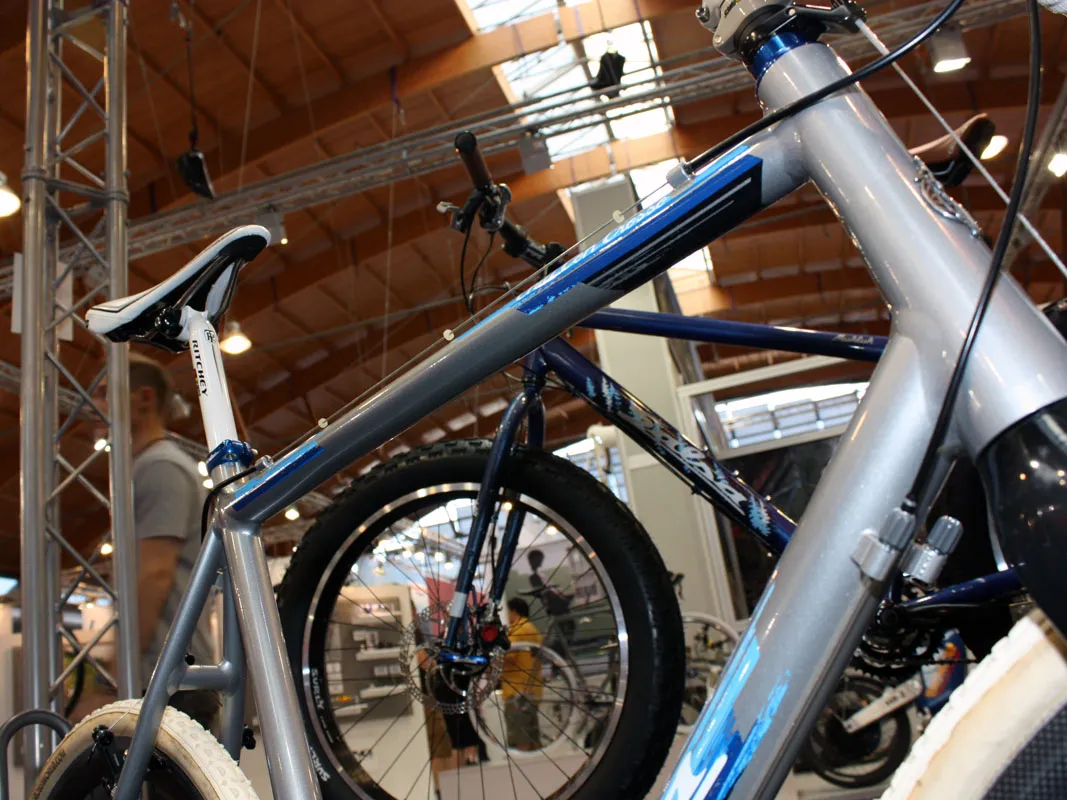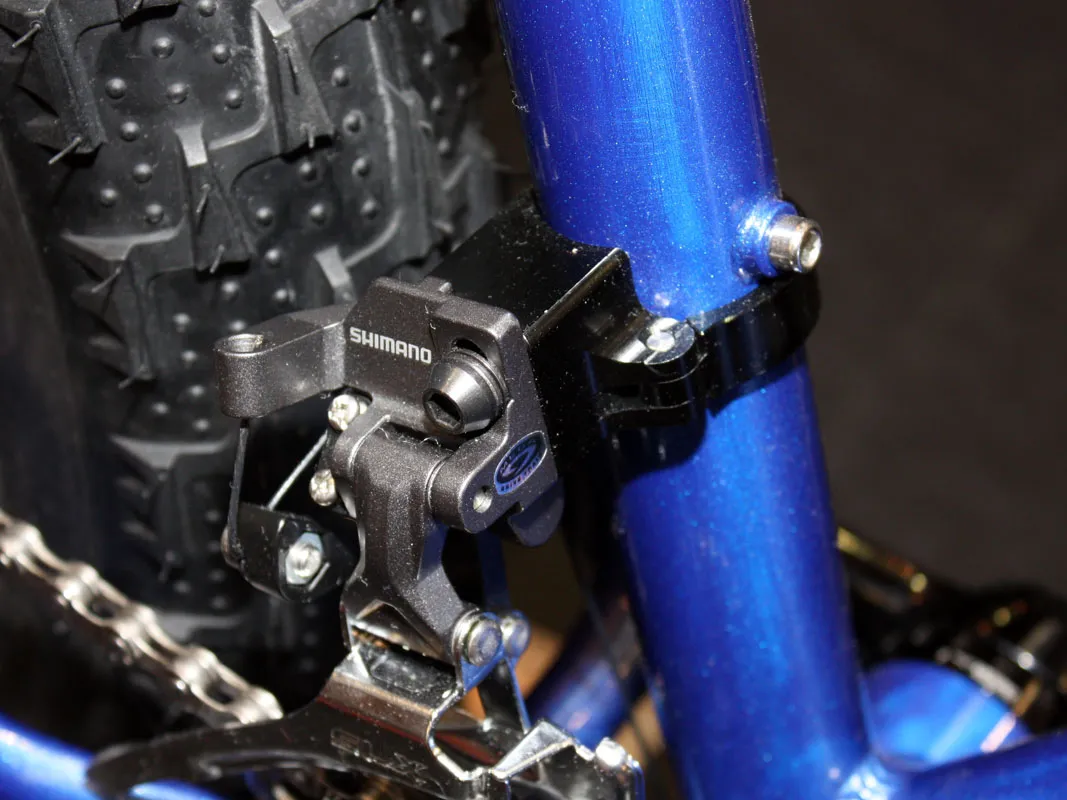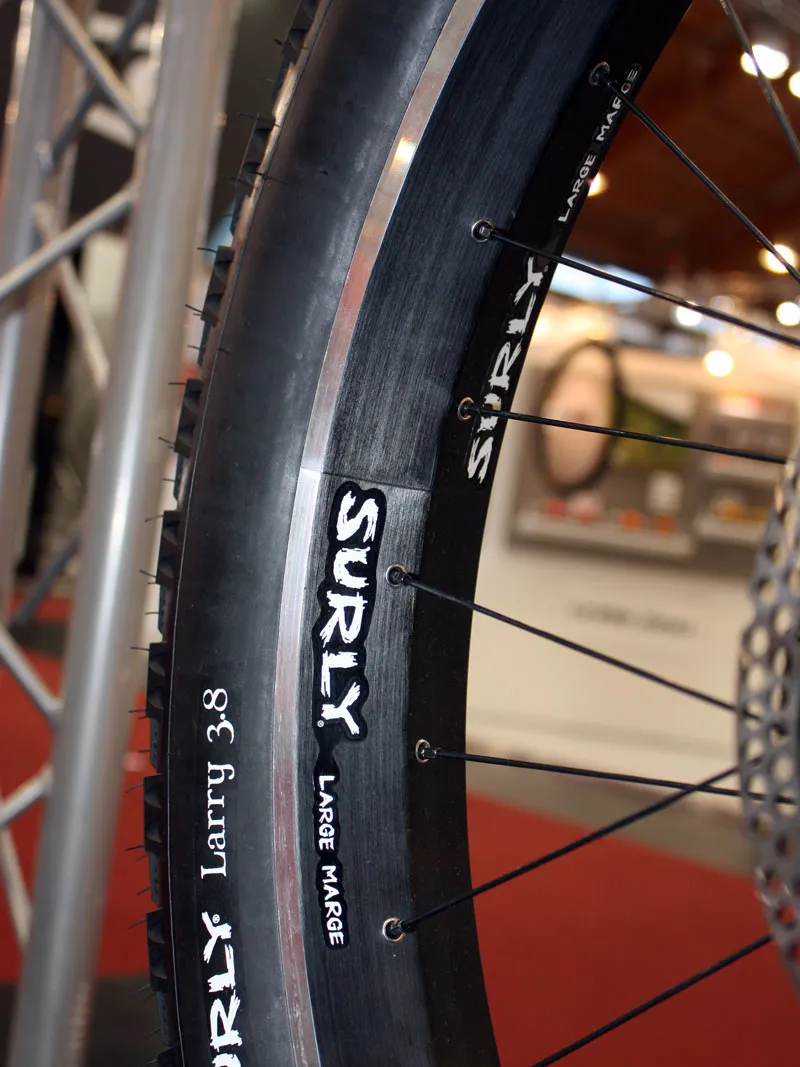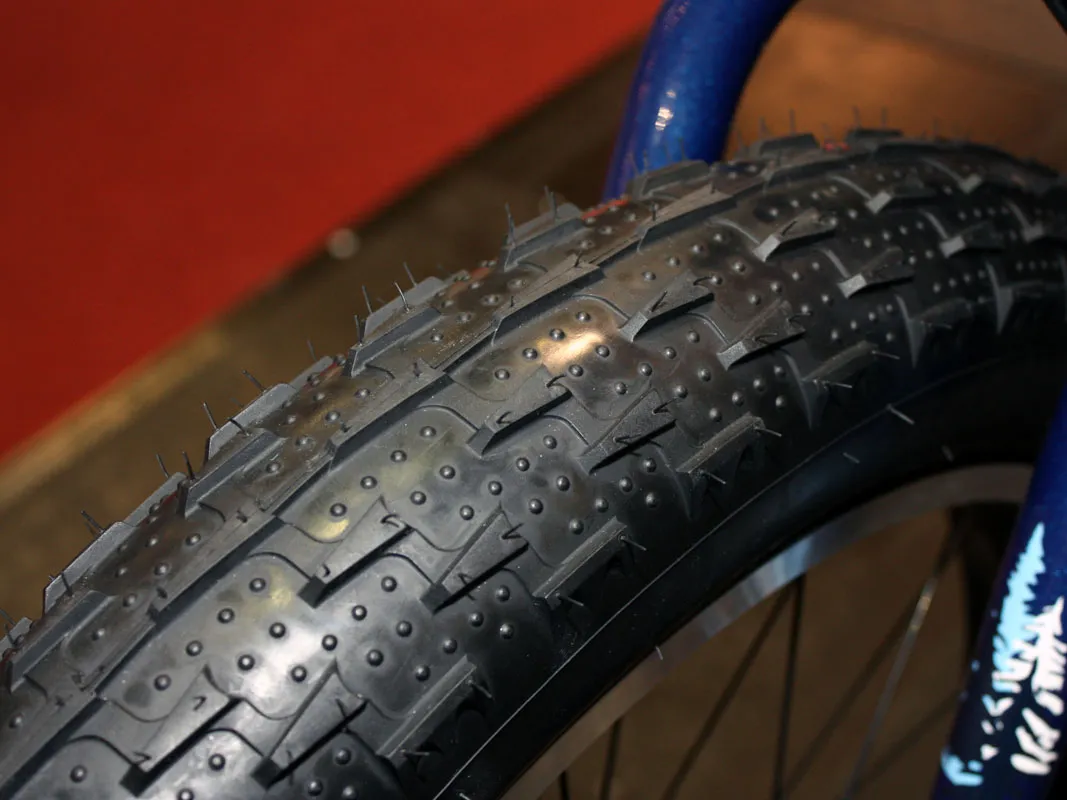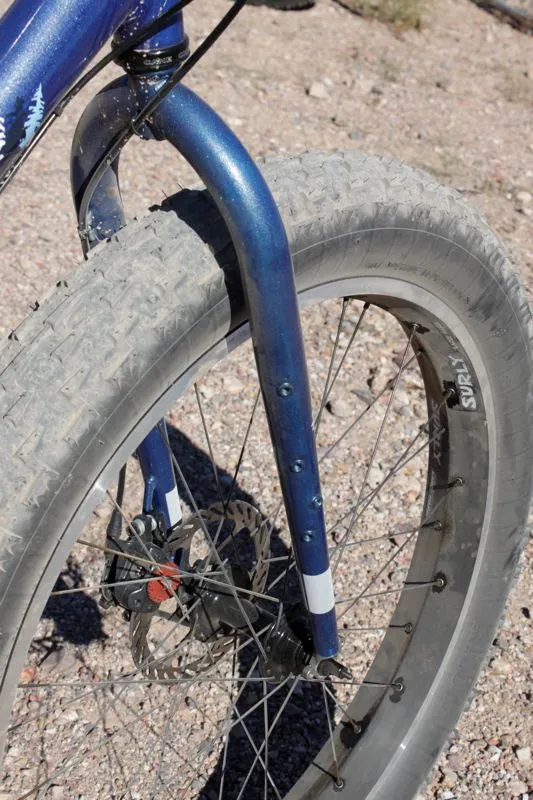Salsa’s new tagline is ‘adventure by bike’ which comfortably embraces models like the new Mukluk and eccentric Fargo, yet hopefully doesn’t alienate racier models like the new Spearfish full-suspension 29er or the revamped Chili con Crosso.
We were able to throw our leg over the Spearfish at the Interbike tradeshow and after a few quick loops in the hot Nevada desert we came away impressed by this affordable big wheeler.
However, while the frame is light and feature-packed, the extremely well priced (US$2,250) complete bike feels slightly portly and sluggish on the trail. We attribute this to tire choice (WTB's 2.2in Wolverine 29er model) and a slightly short front end, rather than any failings with the suspension.
Indeed, the 80mm of rear travel felt race inspired and pedalled extremely well both in and out of the saddle without using any sort of lockout or platform in the rear shock. Up front, the bike tracked well, benefiting from the tapered head tube and fork steerer.
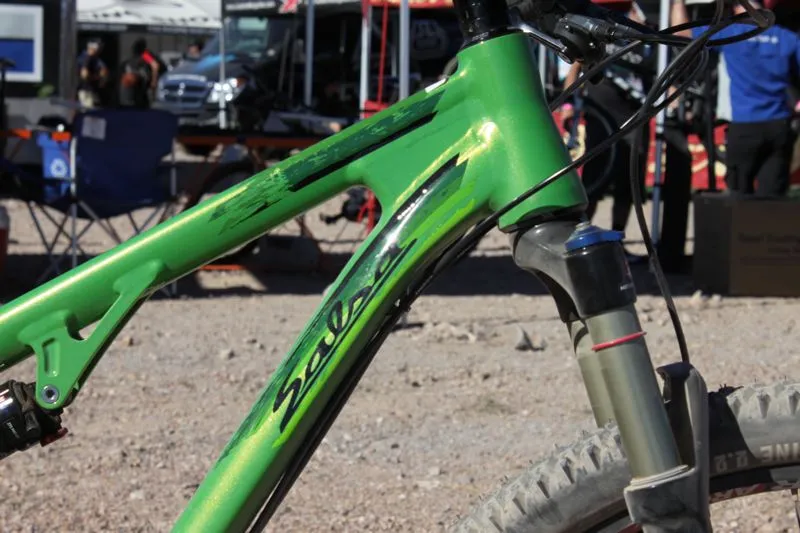
The Spearfish offers good front-end stiffness through a tapered head tube and robust top and down tube junction
Though our test ride was short, our time on the Spearfish was quite enjoyable. The rear end pairs well with a 100mm fork and offers adequate travel to smooth out most anything you’ll encounter in a cross-country, 24-hour, 50-mile or 100-mile mountain bike race.
These are the types of events Salsa kept in mind when designing the bike, but it actually seemed ready to handle slightly more – we gently bottomed the suspension on a 3ft drop on our test loop.
The bike has been built with a focus on both light weight and value. The new 5.5lb frame (claimed for medium size) forgoes the use of scandium – which has been a staple feature of the racier models in Salsa’s line, but isn’t cheap – for hydroformed EV6 alloy tubing, which allows Salsa to hit the magic price point of $999 with a RockShox Monarch rear shock.
The EV6 Extrolite, which is a 6000 series alloy with a custom heat treatment, is said to perform almost as well as scandium in terms of weight, stiffness and bending – important as the Spearfish continues Salsa’s history of replacing pivots with bending metal. This shaves weight and reduces the number of bearings. To offer up the full 80mm of travel, the stays only have to bend by about 5mm.
The rear end connects to the shock and dog-bone swing link with a co-pivot to further reduce redundancy and weight, while the suspension rate starts off falling and rises just slightly at the end, which may have made for our barely discernable bottom-out on the test track.
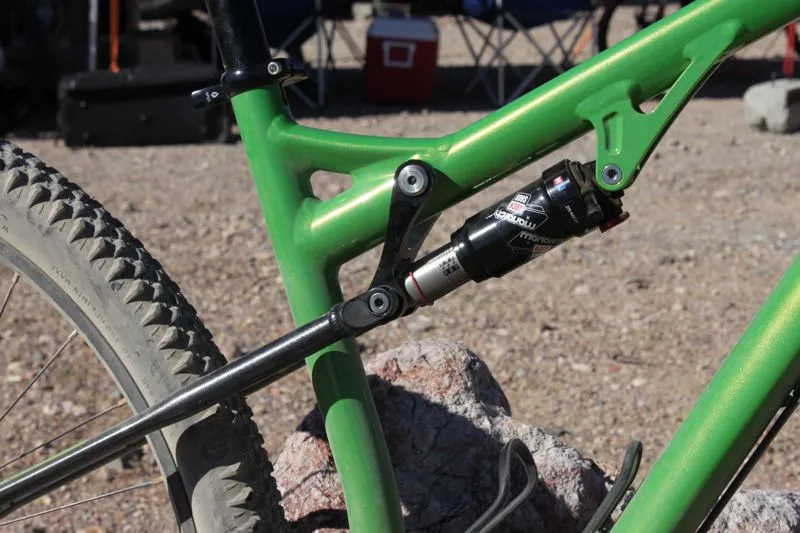
The Spearfish combines its rearward shock mount and seatstay pivot to save weight
Geometry pairs a 71-degree head angle with a 73-degree seat angle. The medium bike has a 600mm top tube (effective horizontal) and 1,109mm wheelbase. Chainstays on all four sizes measure 455mm and bottom bracket drop is 45mm. Our first ride left us thinking we might like a slightly longer top tube and a slightly slacker head tube, but all in all the bike behaved politely.
The Spearfish keeps up with the technology of the times, too. We’ve already mentioned the tapered head tube but it’s also equipped with SRAM’s simpler take on BB30 called PressFit30. The design uses a very basic single bore 46mm bottom bracket shell that accepts a PressFit composite bottom bracket. this setup is light and very simple to manufacture – both attributes that fit with the overall purpose of the bike.
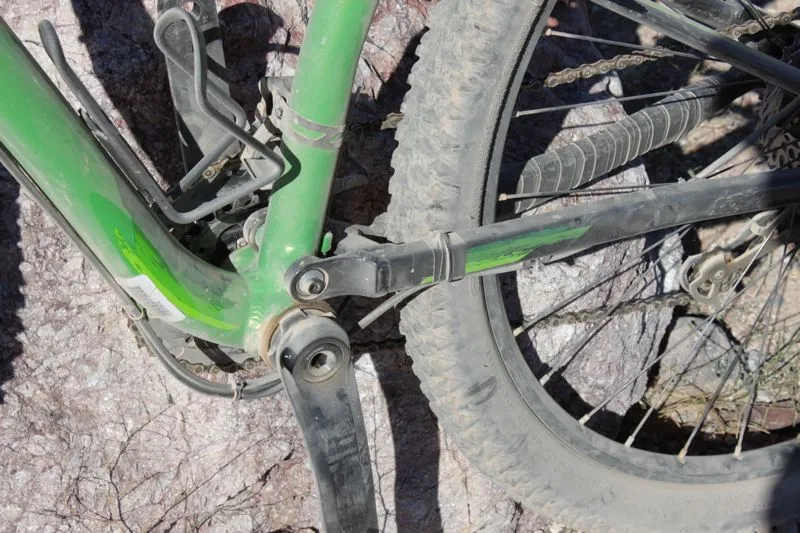
A PressFitBB is used to save weight; unfortunately the Spearfish will not fit SRAM's narrow, XX spec, 156mm Q-factor
The Spearfish we rode in Bootleg Canyon was kitted out with a RockShox Reba RLT fork, Monarch RT rear shock and 2x10 drivetrain built with a mix of SRAM X9 and X7 components. A highlight of the build was Salsa’s use of Stan’s NoTubes ZTR Arch tubeless 29er rims.
Chili con Crosso update
Salsa have dropped the fancy scandium-enhanced aluminium tubeset for their popular Chili con Crosso cyclo-cross frame for 2011, replacing it with the same hydroformed EV6 alloy used in the Spearfish – with purpose built tubes, of course.
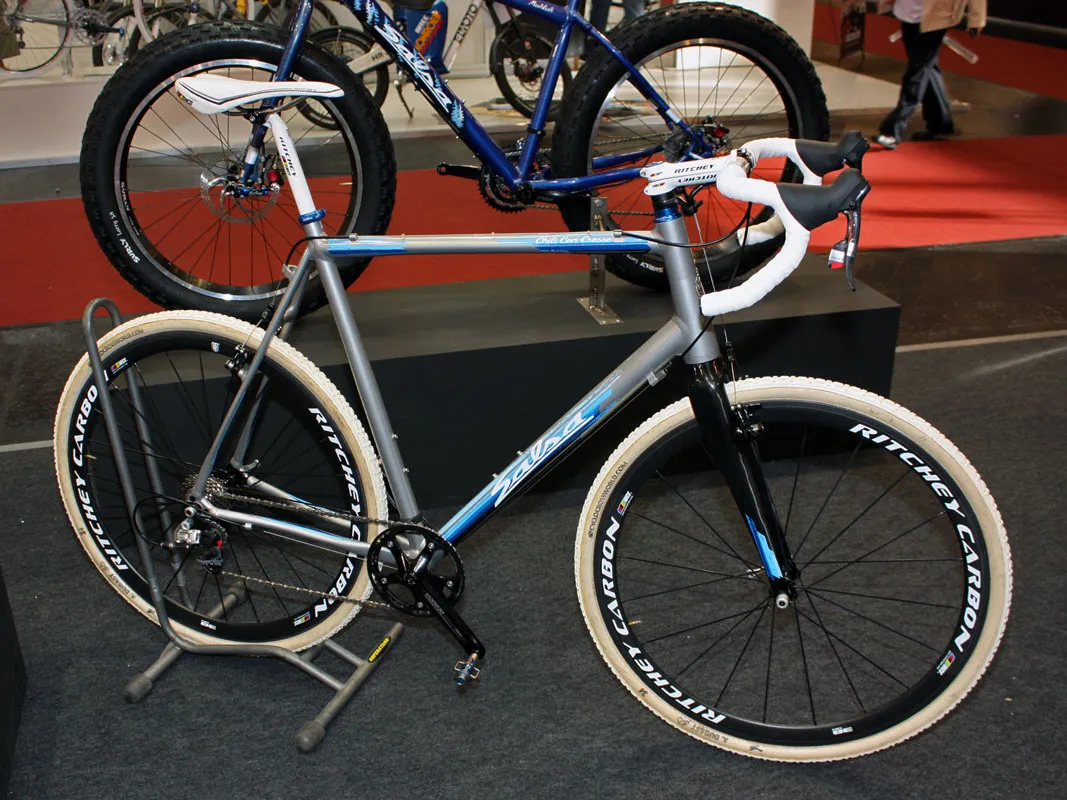
Salsa has totall redesigned its popular Chili con Crosso frame, ditching the scandium tubeset but adding in other features that will likely more than make up for it.
In this application, product manager Tim Krueger says the new alloy is stronger, stiffer and yet more comfortable on account of its more heavily massaged shapes. The 1,520g claimed frame weight is virtually unchanged from the more expensive scandium version.
Key features include flattened chain- and seatstays that are designed to flex vertically under impact loads – technology borrowed from the company's pivotless full-suspension mountain bikes – and a top tube that now sports a longer flattened section underneath for easier shouldering.
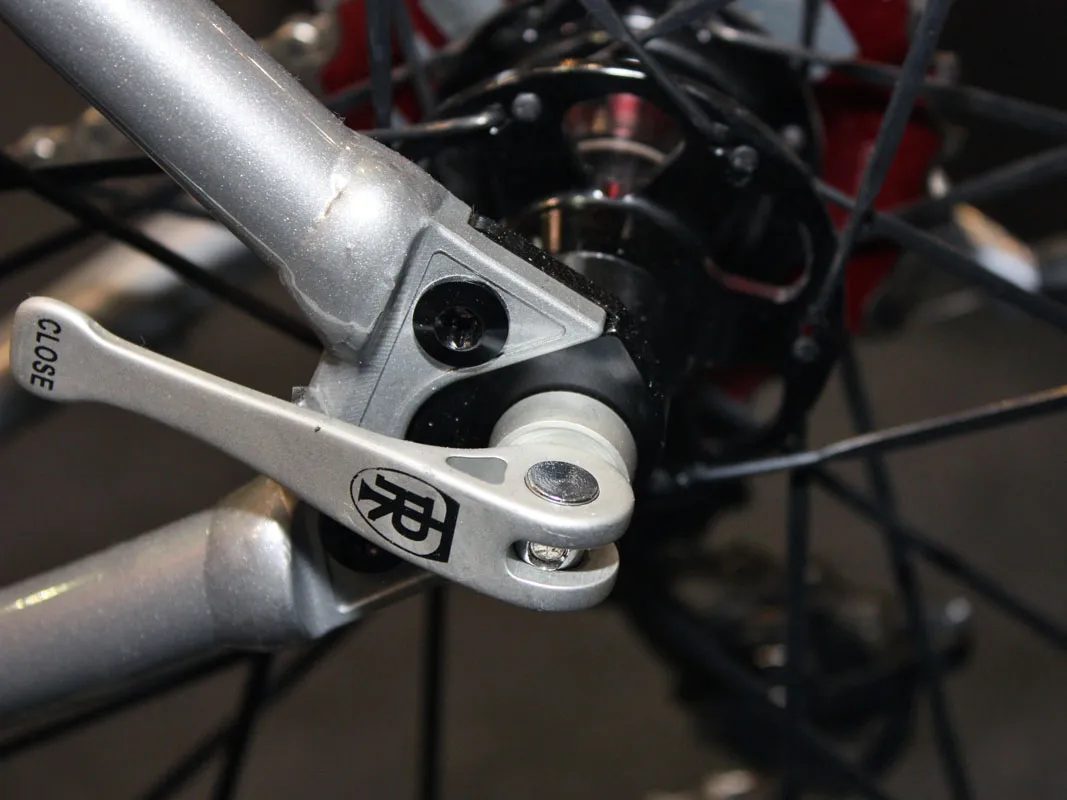
Salsa's 2011 Chili con Crosso now features swappable dropouts for geared or single-speed use.
Up front there's a newly tapered 1-1/8in to 1-1/2in head tube and matching all-carbon fork for reduced brake shuddering and more precise handling, while the rear end gets interchangeable dropouts to suit geared or singlespeed drivetrain setups. Best of all is that the price for the frameset has actually gone down $30 to just $799 and now includes a Cane Creek headset.
Mukluk snow bike
Riders living in wintry climates may be interested in Salsa's new Mukluk, which brings the once prohibitively expensive snow bike genre down to a far more reasonable pricepoint for 2011.
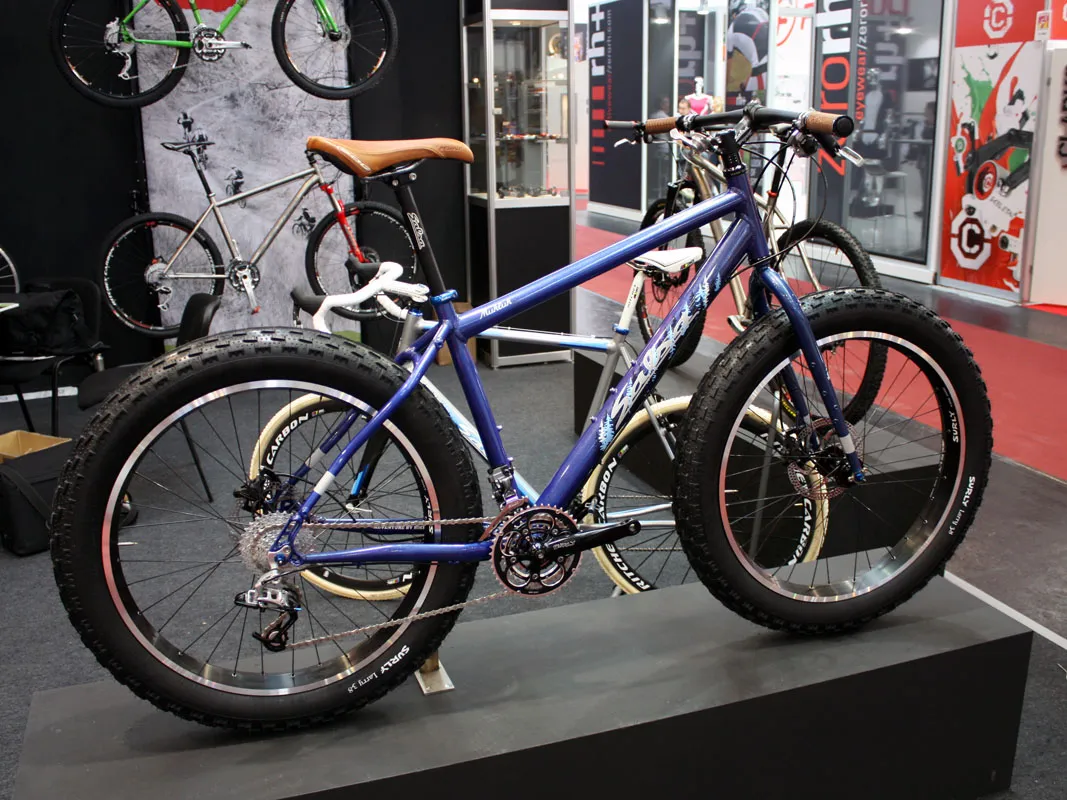
The Salsa Mukluk should bring snow bikes into more financially attainable territory with a pleasantly reasonable price tag of just US$1,499.
The double-butted 6061-T6 aluminium frame and matching Salsa steel fork are built to accommodate Surly's massive 26x3.8in Larry tires, with room to spare – up to a full 4in, in fact. Both the fork and frame feature triple bottle cage mounts, which hold proprietary cages that accept Nalgene and fuel bottles, as well as a sleeping bag.
Front and rear hub spacing is 135mm for easy interchangeability in case of a frozen freehub body, the included proprietary front derailleur clamp is designed around the latest direct-mount fitments, and the 100mm-wide threaded bottom bracket shell accepts readily available downhill and freeride-oriented bearing sets.
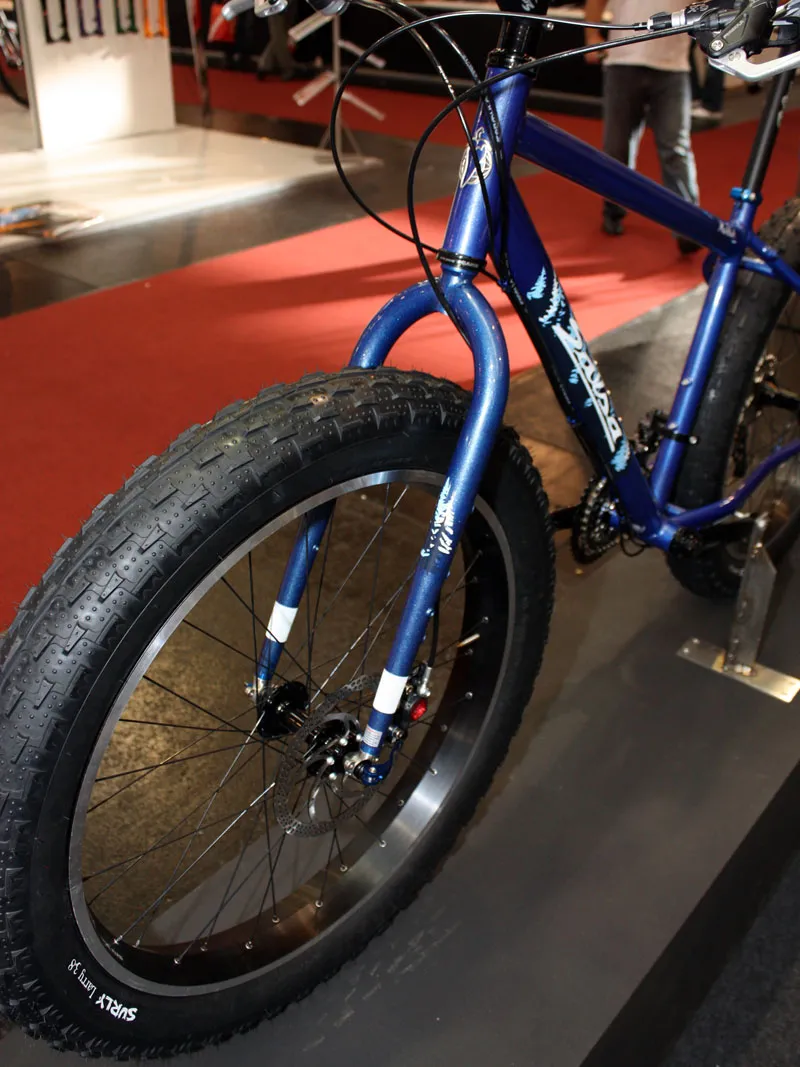
Front hub spacing on the Salsa Mukluk is set at 135mm - both to more easily accommodate the enormous tire as well as to lend front-rear wheel interchangeability in the event of a freehub body failure.
Salsa intentionally outfit the Mukluk with a rather upright position which gives more sedate handling manners and a lower bottom bracket height. This makes sense as riders in this category aren't necessarily looking for an aggressive setup and difficult conditions are surely to force the occasional dab. Likewise, the front-end sticks with a straight 1-1/8in steerer rather than a stiffer tapered setup as it's unlikely this bike is going to see warp speeds.
What the Mukluk is likely to see, though, is a lot more market share than this type of bike has enjoyed in the past. Salsa have set the retail price for a complete bike at just $1,499 with a mix of value-oriented components from SRAM, Shimano, FSA, Avid, the Salsa and Surly house brands, and even rims from boutique builders Vicious Cycles. Complete claimed weight is 15.5kg (34.2lb) without pedals.
